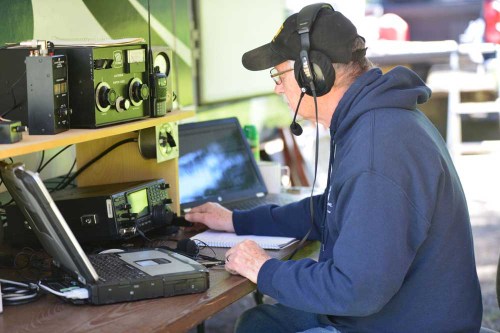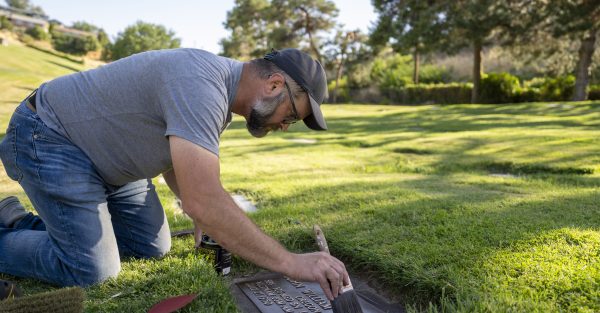Grande Ronde Radio Amateur Association members set to help in an emergency
Published 7:00 am Saturday, July 2, 2022

- Joel Hinshaw of the Grande Ronde Radio Amateur Association listens for radio signals June 25, 2022, at Bird Track Springs Campground near La Grande.
LA GRANDE — A group of Grande Ronde Valley ham radio operators are helping keep an iconic part of the past alive while securing Union County’s future.
The individuals are the members of the Grande Ronde Radio Amateur Association, many of who use Morse code, a communication tool that was all the rage for much of the 1800s when the telegraph was the king of long range communication.
Trending
Morse code is used far less frequently today, but many members of the Grande Ronde Radio Association are keeping their Morse code skills sharp because in an emergency sending radio messages via Morse code can be faster and more effective than sending them via voice.
Less radio bandwidth is needed to send messages via Morse code and it can be easier to understand the because it is simpler.
“With Morse code you don’t have to deal with the complexity and nuance of voice,” said Ted Ivester, of the GRRAA.
Ivester and other members of the club were hard at work keeping their Morse code skills sharp last month while participating in American Radio Relay League Field Day, an annual international event, at Bird Track Springs about 5 miles southwest of Hilgard State Park near La Grande.
The amateur radio enthusiasts had a single primary objective — to prepare Union County to have a link to the outside world in the event of a disaster, such as an earthquake, flood or windstorm that could knock out all internet, cellphone or landline communication in the Grande Ronde Valley.
Such a disaster could leave ham radios as the valley’s only connection to the outside world.
Trending
“We would be the last line of communication,’’ GRRAA member Joel Hinshaw said.
Off the grid
Bird Track Springs Campground was an ideal site for the event because it forces radio operators to function in an environment where they have no access to operational electrical outlets, just as they might during a natural disaster.
“It is off the grid,” GRRAA member Tyson Brooks said.
Brooks said field days provide excellent learning opportunity when they can be in places such as Bird Track Springs.
“It is a simulation of what we need to do to run radios away from civilization,” Brooks said.
Radio operators had to rely on batteries and electricity from solar panels and gas fueled generators to power their equipment.
Many of the operators set up their antennas with the help of fishing reels and poles. Operators loaded reels with fishing line and cast it high into trees to help set up antenna wire.The antenna wire made it easier to reel in signals from throughout the United States and distant countries during the contest period that ran from 11 a.m. June 25 to 11 a.m. June 26.
GRRAA members made 790 contacts during the training. A total of 168 of the contacts were via Morse code, 451 were via voice and 171 digital connections, also described as computer-assisted radio.
A total of 446 contacts were from the 48 contiguous states, five were from Alaska and five were from radio operators in Hawaii. Contacts were made with radio operators in Canada and other foreign countries, including Japan, Indonesia and Uruguay.
No contacts were made with radio operators in Ukraine. GRRAA member Mike Orcutt said many ham operators may be reluctant now to operate their radios because it would give away their location to Russia’s military, which invaded Ukraine in February.
“They could triangulate their position, which could make them a target,” he said.
Waiting in line
Orcutt, who used a digital system to make contacts, said there were times when it seemed like everything was happening at once.
“Sometimes I would be making a contact and I would have three or four others waiting,” Orcutt said, explaining that he could see that radio operators were in line via his computer screen.
Contacts between operators were just long enough to exchange bare bones information including the call signs of their club and their location. After an exchange was completed, operators would record the strength of the signal they received.
Brooks said people communicating via ham radio on field days do not tend to get to know each other well because exchanges are short. He said, though, he has made many friends he first met over the air and knows of many others who have become radio buddies.
“Some people will meet over the radio and be friends for the rest of their lives even though they may never meet each other in real life,” Brooks said.









